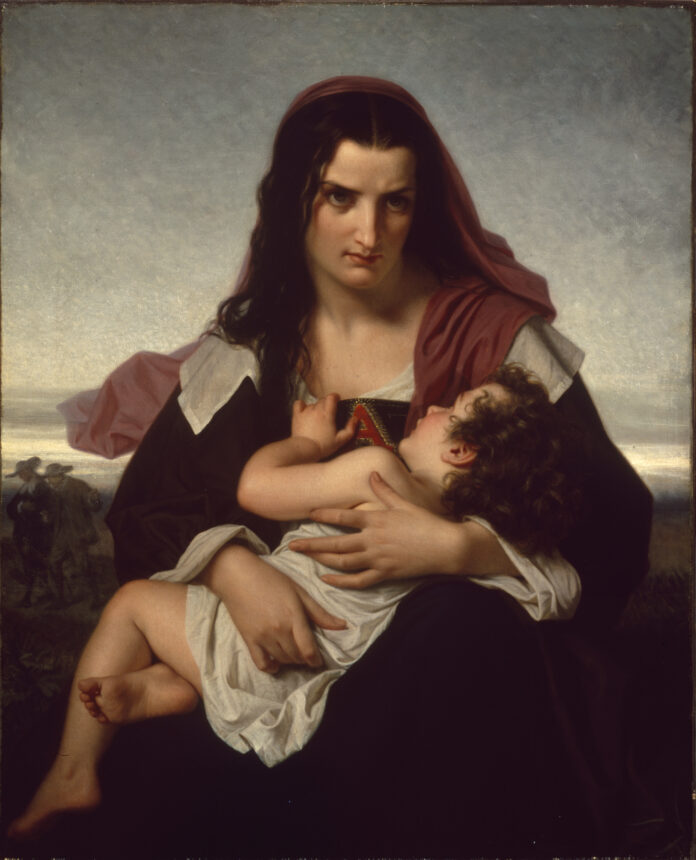The Scarlet Letter, a quintessential piece of American literature by Nathaniel Hawthorne, has inspired various artistic interpretations over the years, exemplifying the enduring power of its themes. Among these interpretations, a notable painting presented by The Walters Art Museum captures the essence of Hawthorne’s story, elucidating profound societal issues such as sin, redemption, and female agency. This article illuminates the painting, encouraging a younger audience to glean insights from its complex narrative. The exploration of the symbolism inherent in the painting and its connection to contemporary feminist discourse will be paramount in this analysis.
In this painting, the visual representation embodies the confluence of emotion and morality that Hawthorne so eloquently articulated in his novel. The Scarlet Letter extends beyond a mere narrative constructed in 17th-century Puritan New England, evolving into an emblem of resilience against societal judgment. This discourse unravels the subtle intricacies of the painting, illustrating how its aesthetic merits correlate with the thematic profundity of the literary work.
Artistic Representations of Literature: A Journey Through Time
Throughout history, artists have persistently drawn inspiration from literature, seizing upon the opportunity to render visual interpretations of textual narratives. This cross-pollination manifests itself vividly in the myriad of adaptations stemming from classic texts. The Scarlet Letter is no exception. The painting at The Walters Art Museum serves as a conduit for examining the thematic discourse of Hawthorne’s narrative. It distills the essence of Hester Prynne’s plight as she navigates the choppy waters of ostracism and empowerment.
Visual elements within the painting may reflect Hester’s personal journey while simultaneously addressing broader societal constructs. The rich palette, coupled with intricate details, might evoke the emotional turbulence of her experience. The artist’s technique, whether through chiaroscuro or vibrant colors, speaks to the dichotomy of sin and virtue, complicating traditional moral frameworks. The allure of the Scarlet Letter painting lies in its ability to function as a visual metaphor for self-identity amid oppressive societal norms.
Emblems of Resistance: The Scarlet Letter and Feminist Discourse
To fully appreciate the painting, it is essential to contextualize Hester Prynne within the broader spectrum of feminist thought. Hester emerges not merely as an individual marked by sin, but as a symbol of resistance against patriarchal constructs. She audaciously claims her identity—a defiance that resonates strongly with contemporary feminist ideals. The letter “A,” often interpreted purely as an emblem of shame, can also be reconfigured as a mark of strength and autonomy, signaling rebellion against societal constraints.
This reimagining of Hester’s mark in artistic portrayals invites viewers, particularly younger audiences, to engage with notions of empowerment and self-advocacy. The symbolism in the painting transcends the historical narrative, prompting critical discussions surrounding female representation and agency. Young feminists might discover parallels between Hester’s struggles and the obstacles faced by women today, thereby realizing the timeless nature of these conversations.
Interpreting the Symbolism: Color, Composition, and Context
Understanding the intricacies of the Scarlet Letter painting demands a close examination of its visual components. The artist’s choice of color can evoke specific emotions, and the composition plays a pivotal role in guiding the viewer’s narrative journey. For instance, the juxtaposition of light and dark may symbolize internal conflict, encapsulating Hester’s tumultuous experiences. Such nuances can resonate with younger audiences grappling with their interpretations of morality and personal choices.
The central figure of Hester Prynne invariably commands attention. Her posture, expression, and the ambiance surrounding her might suggest a myriad of interpretations. Is she a martyr? A visionary? A defiant spirit? Each viewer’s perspective will differ, allowing for a rich tapestry of interpretations that encourage dialogue about women’s roles in society, both historically and in contemporary contexts. This dynamic interplay of perspective fosters a sense of agency among younger viewers, empowering them to articulate their interpretations of both the painting and the narrative it represents.
Challenging Societal Norms Through Artistic Expression
By examining the Scarlet Letter painting through a contemporary lens, we uncover an opportunity for critical engagement with societal norms. To challenge the status quo requires an examination of how art functions as a form of protest. Within the confines of Hester’s narrative, the juxtaposition of her vibrantly rendered figure against the muted backgrounds serves to highlight the isolation imposed by societal judgment. This intentionality blurs the lines between the depicted era and modernity, emphasizing that the consequences of ostracism remain deeply rooted within the collective psyche.
The painting thus acts as a thoughtful commentary on current dialogues surrounding women’s rights, body autonomy, and the dignity of self-expression. For young audiences, the act of scrutinizing Hester’s defiance against the constructs of her time can spark vital conversations about present-day challenges faced by women in various cultural contexts. Engaging with this painting allows viewers to reimagine personal narratives, fostering an understanding that empowerment often arises from adversity.
Reviving Conversations: The Relevance of Hawthorne’s Narrative Today
The painting invites a reexamination of Hawthorne’s literature in a modern context. Through discussions about sin, consequence, and societal perceptions, young viewers can draw parallels between Hester’s story and their own lives. As new social challenges emerge, the themes encapsulated in The Scarlet Letter remain pressing—particularly the concepts of judgment, identity, and personal freedom.
In conclusion, the Scarlet Letter painting serves as a dynamic convergence of literature and visual art, echoing the complexities of human experience. Through its intricate symbolism, viewers are invited to engage with larger questions of morality, identity, and female empowerment. The narrative of Hester Prynne reflects not only a historical moment but also a timeless struggle for autonomy and self-acceptance. Thus, this artistic representation continues to resonate, particularly in fostering discussions amongst younger audiences about self-worth, societal judgment, and the enduring fight for women’s rights. By bridging the gap between literature and art, the painting serves as a reminder that the stories of women, both past and present, deserve to be witnessed and celebrated.





























